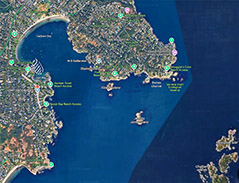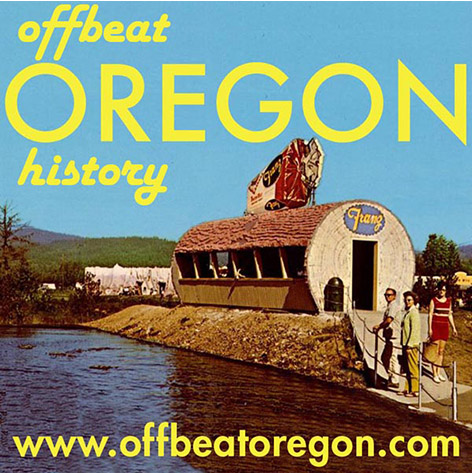CONTINUED FROM THE PRINT EDITION:
Colorful sea-captain was a Han Solo for the 1800s
Jemmy wasn’t home free yet, though. The marshal had an assistant or deputy with him, who he left in charge of the ship for the night. But when, early the next morning, the assistant went ashore to talk to his boss about something at the hotel, leaving the ship wholly unsupervised, Jemmy saw his chance. After hurriedly revealing his presence to the schooner’s crew, the wily skipper got right to work implementing Phase 2 of one of his most audacious plans ever: The theft of his own ship, from right under the nose of the law.
WELSHMAN JAMES “JEMMY” Jones had come to the West Coast in 1849 for the California Gold Rush. He’d been lucky in the fields, and soon had a grubstake together big enough to outfit himself with a freight ship and go into business as a skipper. As a sea-captain, Jemmy turned out to be a marvel — in a “19th-century Han Solo” kind of way. Historian James McCurdy calls him “a veritable stormy petrel, always in some trouble or another on the high seas.” Five of his ships sank or broke up beneath his feet. His third shipwreck earned him a place in the geography books when he crashed his schooner into a small island right in the harbor at Victoria — the island that today is known as Jemmy Jones Island. The incident on the Columbia bar, had it gone the way such groundings usually did, would have been a shipwreck as well — and, given the survival rates for ships broken up on the bar, probably his last. That incident on the bar may have been Jemmy’s inspiration for the innovation that would put him in the history books as well as the geography ones. Crossing the bar in a sailing ship was, and still is, a very dangerous endeavor; the area is peppered with wind shadows in which a sailing ship can suddenly find itself drifting becalmed at the mercy of the currents, which run right across sandbars too shallow for a ship. Sidewheel steamers had a much easier time staying in the channel, but their big paddlewheels got in the way and made all but the simplest sailing moves impracticable. But a new kind of propulsion system had just recently been invented — the screw propeller — that solved that problem. So, why not put a steam engine in his sailing ship? And so it was that, in 1864, the Jenny Jones became the first ship of the type that would become known as a “steam schooner,” a trim schooner-rigged sailing ship with a modest steam plant below decks. In doing so, Jemmy invented probably the most important type of ship in the history of the West Coast. You’ll sometimes hear the invention of the steam schooner credited to a less disreputable innovator who did the same thing to a lumber schooner in San Francisco 15 years later, but that’s simply incorrect. Jemmy did it first. (Actually, Jemmy himself may not have been the first to do this. Historian Gene Barron, an expert on the West Coast steam schooner fleet, says there were a number of steam-powered fishing schooners in British Columbian waters around the same time. This could explain where Jemmy got the idea for his ship, but it also casts some doubt on the claim that Jemmy’s was first. As with so many things from the 1860s, we’ll probably never know.) With his innovative new power setup, Jemmy started making profitable runs from Portland to Victoria late in 1864. But apparently he wasn’t making the money fast enough to pay his Portland creditors. They’d called upon the law to help them collect, and as a result, if Jemmy Jones wanted his schooner back, he was going to have to steal it. In Steillacoom that day, Jemmy got busy doing exactly that.
HAVING A STEAM engine on board made Jones’ escape that much easier. They must have been building steam already for the day’s journey to Seattle — or perhaps the crew had been secretly getting ready all along. In any event, as soon as the long arm of the law headed off to breakfast, the Jenny Jones headed off to the open sea.
|

Meanwhile, Jones and his crew were out at sea with very little fuel in the bunkers and not much food in the cupboards, and they were now wanted men in both the U.S. and Canada. Jones managed to get the ship to Port Ludlow, where they loaded a couple cords of firewood on board and cast off again quick. This load was enough to get the ship to Nanaimo, which Jemmy apparently hoped would be remote enough to not yet know him as an outlaw. No such luck. Although they didn’t try to arrest him at Nanaimo, neither would they sell him coal. So instead, he hired some Native Americans to help him load about 12 tons of coal dust from a nearby abandoned coal dump. Another stop in a third port brought a big load of cordwood to mix with the coal dust, and the Jenny Jones was ready for the open sea — and Mexico, the only country in North America that didn’t have a warrant out for his arrest. Along the way, the outlaw mariners encountered a waterlogged sloop, the Deerfoot, whose exhausted crew of three had been laboring mightily trying to keep her afloat and were steadily losing the battle. The crew begged to be taken off, and Jones was happy to oblige; they also took off the sloop’s cargo of food provisions. With that, the crew of the little steam schooner had everything they needed for their journey. Under sail and steam both, the Jenny Jones headed south, arriving in Mexico 25 days later. There, Jemmy started running freight again, but after some labor-related drama involving the rescued crew of the Deerfoot, in which someone stole the rudder off his ship, Jemmy gave it up in disgust, sold the Jenny Jones for the princely sum of $10,000 and headed for home. When the ship Jemmy was on got to San Francisco, he stepped boldly and casually onto the shore, as if he had nothing to hide and nothing to worry about. The records are silent on this, but one imagines him as unworried, confident, a little cocky — like James Garner’s character in “The Rockford Files.” Of course, he was arrested almost immediately when the authorities realized he was in town, and promptly hauled into court. In court, Jemmy’s defense was that he had not actually escaped from the marshal — rather, the marshal had abandoned his charge and he, finding it unattended there in the harbor, had simply recovered his property. The judge agreed, the case was dismissed, and Jones’ creditors had to sue the marshal for their $4,600. (I haven’t been able to learn if they got it or not.) The Jenny Jones disappeared into obscurity in Mexico. Perhaps she was simply too ahead of her time; another steam schooner would not be built until roughly 1880, at which time the type would revolutionize West Coast transportation. As for Captain Jemmy, he moved back to British Columbia and, for years, skippered a small schooner — not a steamer this time — called Industry, aboard which he almost died in a fifth and final shipwreck in 1878. He died a few years later, in his early 50s, after having become mentally unhinged. It must be said that in Jemmy’s day, most often when men in late middle age went crazy and died, syphilis was the cause — Christopher Columbus being the most well-known example. I have not been able to determine if that was the case with Jemmy Jones, or if something else — head trauma, for example, or perhaps alcoholism — caused his demise. But most people will agree that the world was a less colorful place after he left it.
|





